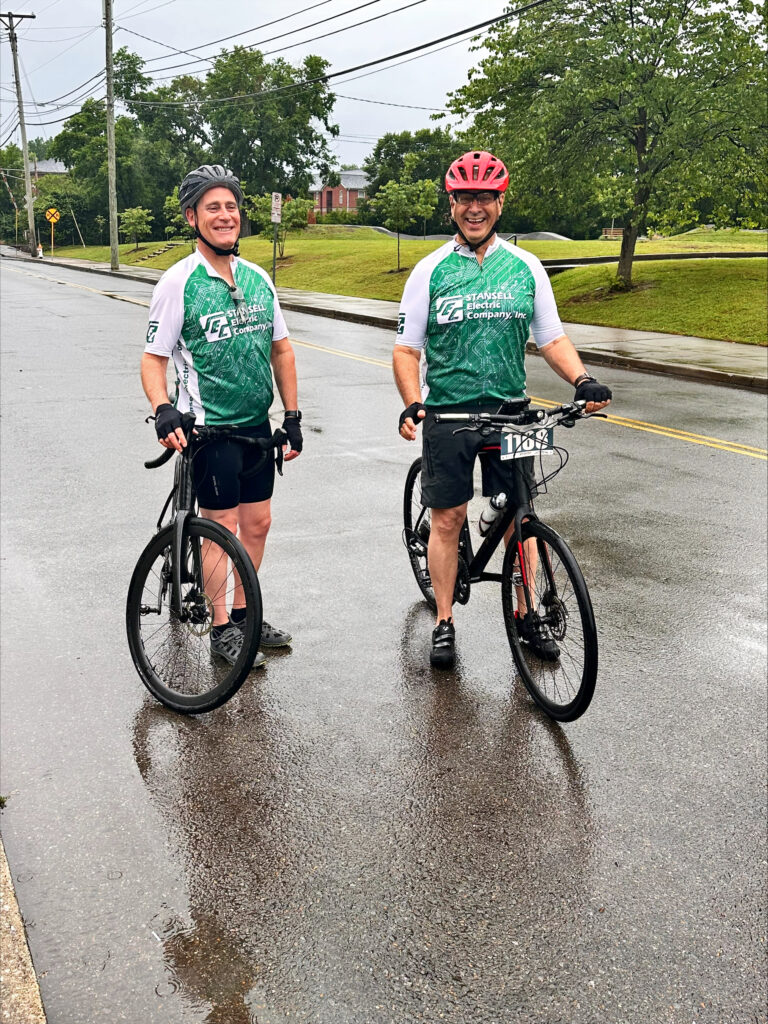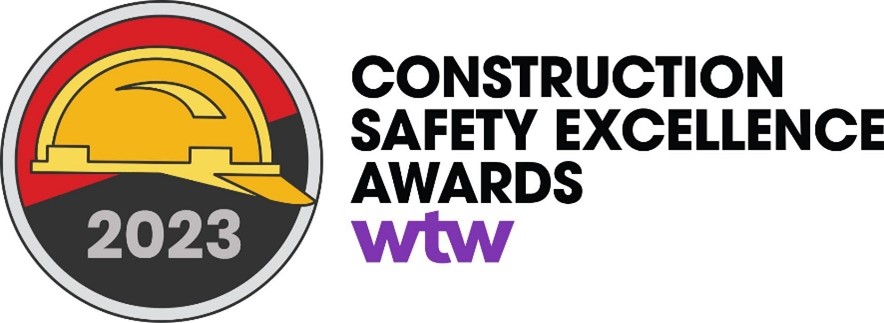News
I-24 Smart Corridor Phase 2 project
LOCATION
I-24 through Davidson and Rutherford Counties
The I-24 Smart Corridor Phase 2 project was a significant undertaking aimed at improving traffic management and infrastructure along the I-24 corridor, encompassing the areas of Davidson and Rutherford counties. This report outlines the challenges, progress, and achievements of the project, highlighting its key components and benefits to traffic management.
Continue readingWalk Bike Nashville

Stansell was excited to be a part of Walk Bike Nashville’s 19th Annual Tour de Nash event last month. Presented by LDA Engineering, this is Nashville’s largest urban bike ride! This year’s event consisted of 1,156 riders and ticket sales grossed over $42,000! Walk Bike Nashville is committed to creating opportunities for people to navigate the city by foot, bicycle and transit safely and confidently through education, engagement and advocacy.

We took on the 25 and 50 mile rides which included scenic routes highlighting Nashville’s neighborhoods, bikeways and greenways. During the tour, our cycling team observed multiple streets and intersections where Stansell’s construction teams have played a mighty role in keeping Nashville’s roadways safe and efficient for all.
Here at Stansell, we have constructed several projects throughout the city that were geared toward pedestrian and bicycle safety, including dedicated bike lanes and technologically advanced pedestrian crosswalks. As a transportation contractor, we are devoted to keeping our community roadways as secure as possible and will continue to stay involved in many ways. Great job to all the Stansell Teams!
Construction Safety Excellence Awards recognizes Stansell Electric

With a purpose to grow people, serve customers and build their community, and a mission to be the company people trust to power projects safely and successfully every time, Stansell Electric’s Injury Free initiative provided a drive to ensure workplace safety.
In March of 2017, Stansell Electric launched Injury Free and empowered their employees to implement changes that ensure at the end of each day they all go home safely to their families and friends. Injury Free is a culture change platform that propelled their company to achieve in 16 months the lowest incident rates over the past decade.
Recently at the Construction Safety Excellence Awards in Las Vegas, Stansell Electric was recognized for having one of the nation’s top construction safety and health programs in 2022 by the Associated General Contractors of America (AGC). Stansell Electric was judged and selected as the second-place winner in the Specialty Contractors division, 350,000 – 1 million, work hours. “We invest so much time and energy in organizing what is a very rigorous awards program because this is a vehicle for elevating the safety and health of the industry” said Dan Fordice, the association’s president and vice-president of Fordice Construction Co. in Vicksburg, Mississippi. “By finding and highlighting some of the very best industry safety and health programs, we are seeking to elevate safety and health within the entire industry.”
In addition, at the annual Tennessee Road Builders Association meeting in March 2023, Stansell Electric received two big awards, the Platinum Safety and Subcontractor of the Year. The Platinum Safety award recognizes contractors with zero injury related accidents during the year; this is the second year in a row that they have received this award. For the third time in the company’s history, they were named Subcontractor of the Year which is voted on by Prime Contractors, Associates, and Suppliers based upon the following criteria;
- Accurate and responsible quotations
- Quality workmanship
- Safe worksite and work habits
- Sufficient personnel and equipment to timely construct the project
- Prompt payment for supplies and materials
- Prompt in providing documents and certifications
- Ability to meet the project schedule
Stansell was honored to have received such high recognition and they look forward to continuing this service.


Growing our people and helping build the community
View article at VirtualJobShadow.com here or view below:
Smith County Schools: Career Exploration, Financial Literacy, and Inspiration at Work in Tennessee
Pat Brothwell
January 27, 2020
Nicholus Bussell’s been asked if teaching personal finances to freshmen is a little too early. It’s a fair question, considering financial literacy has traditionally been something introduced later in high school, typically at the junior or senior levels. Many schools don’t teach it at all. A 2017 “Report Card” by the Champlain College Center for Financial Literacy gave 27 states grades lower than a C in respect to their financial literacy efforts, and only 5 states (including Mr. Bussell’s home state of Tennesee) received an A. It also found that only 28 states have financial literacy standards for students at the middle school level. They’re not learning it at home either. 69% of parents are reluctant to discuss finances with their kids, yet only 23% of students indicated that those non-reluctant parents actually sat down and talked with them.
Mr. Bussell always has the same answer. No. It’s not too early to start teaching students about financial planning. In his experience, underclassman are the ones who take these lessons seriously and freshmen are more eager to tackle this topic, especially since his course is in the second semester. If you’ve ever taught a senior during their second semester, you know what he’s getting at. It also makes sense to introduce this topic before it’s too late. Telling a high school senior how to balance car payments and student loans once they’ve already starting acquiring both is a bit of a moot point. He stressed that the earlier we teach students about personal finances, the earlier they can start implementing their new financial literacy.
Nic’s freshmen students are perfect examples. He’s had students open both checking and savings accounts. He’s had 9th graders start investing in CD’s, which is astounding to a certain writer who would’ve ran out to The Wall to stock up on Now Volumes 1-12 if you had asked him to “invest in a CD” as a freshman (which he then would’ve apparently followed up with a severely outdated joke?).
It’s not just experience that backs Nic up either. So does research.
There are studies that prove that by age 12, students have the capability for the same “economic understanding” as adults. Even more pressing, there’s a real financial literacy deficit in our country. 63% of adults can’t answer basic financial questions. 40% of Americans don’t have the savings to cover an emergency over $400.00. 17% say they’re unable to pay their monthly bills. 72% of Americans have felt stress over money in the past month. We’ve talked here about the massive amounts of student debt crushing Americans. Credit card debt is even worse. Nic stressed that in relation to financial planning, helping his students avoid student debt is one of his main jobs, because he realizes what a burden it becomes.
If you’re thinking, “wait, aren’t we here to talk about the innovative ways Mr. Bussell is using VirtualJobShadow.com in Smith County Schools?”, well, you’d be correct. We are. We’re here to talk about the innovative way Nic, a CTE instructor at Smith County High School, marries career exploration to personal finances in a way that helps students synthesize the connection between their passion, their career, their priorities, and the lifestyle they want. He’s doing this at a young enough age that students will hopefully see the correlation between salary, career, and lifestyle, and be able to avoid the financial pitfalls we’ve just spent time outlining.
Nic, who’s also a head girl’s soccer coach, assistant boy’s soccer coach, student council advisor, and assistant athletic director, teaches a Career Connections course in the fall semester and Personal Finances in the spring. He’s utilizing VirtualJobShadow.com as the bridge between the two courses, believing career and personal finances to be two sides of the same coin. The first activity students in Nic’s class do is take the assessments evaluating their interests. They then spend at least a month exploring as many careers as possible before narrowing it down to five they’d like to research indepth.
At this point students discuss how much the jobs they’re interested in pay, how much education for said careers cost, what lifestyle each career will support, and if that fits into their future plans. They pick five careers so they can have options if one doesn’t pan out how they envision. Mr. Bussell tells students they’re allowed to have, “a backup plan in life.” While both he and research say you’re happiest if you don’t go into something for money, it’s still an important factor in determining if a career is the right fit for you.
Students in the spring semester revisit their VirtualJobShadow.com career choices when they complete a “Lifestyle Project.” Nic has students create their ideal lifestyle and explore the finances needed to create that lifestyle on a granular level. Students pick what kinds of houses they want. They pick the kind of car they’d like to drive. They discuss if they’d like to get married, have children, and what additional household members mean for their lifestyle. They factor in schooling. They factor in homeowner’s insurance. They factor in rent, mortgages, and house payments. They factor in car payments and car insurance. They talk about taxes.
The lifestyle project is 2.5 weeks. The first week is about exploring your goals. Nic reminds students to be realistic, but mentioned how it’s sometimes here where students, especially those with no prior financial planning experience, spread themselves a bit thin. They go for the big house and Lamborghini. The second week is where students are forced to be realistic. This is where they must start confronting the stark reality of, if I want that house, I can’t have that car.
In week two, Nic has students identify their first choice job. “Here’s what you chose,” he tells them. “Here’s what you’re going to make, and this is where you’re going to figure out how to support yourselves.” Students then compare the lifestyle they’ve built with their projected salary. They present a monthly budget total, a monthly salary requirement, a yearly budget total, a yearly salary requirement, and then compare that to their projected income based on the career they chose. Will a student’s dream job sustain a dream life? Maybe. Maybe not. Either way, students are getting a helpful dose of reality.
Nic said what he’s trying to stress to students is that that by starting early and having a plan, salary could be less of an issue than many students initially think. “You could make it work if you’re smart about it,” he said. Like many of the students of Smith County Schools, Nic grew up in a rural area, knowing a limited range of careers. He recounts being told he’d work on a farm because that’s what was around him, and wants students to realize that if they don’t want to do what people think they should do, that’s ok.
Nic said that every year, it seems that a different set of careers resonate to the students of Smith County. Recently, he said it’s been physical therapists, jobs in education, welders, mechanics, and farmers, but in the past he saw numerous hospitality and business careers. He loves seeing students exploring careers and breaking out of their comfort zones. He said it’s always good to see students who are interested in a certain pathway learn all the options that fall under that. Students love finding out just how many different types of engineers there are or all of the various jobs that fall under the culinary umbrella. Nic tries to expose kids to some jobs they’ve maybe not heard of, both with the VirtualJobShadow.com, and in guest speakers.
The chef’s kiss is finding local success stories. We close the career awareness gap by modeling to students how people just like them have excelled in jobs that aren’t right in front of them. Nic recently had Kevin J. Wills, the CFO of Pilot Flying J, a large truck travel stop company based in Knoxville in his classroom to speak with students. Topically, Kevin, who was previously Manhattan based and worked for Tapestry, Alix, and Saks Fifth Avenue, exposed NIc’s students to the confluence of money and work in a real-life way. He also inspired them with evergreen career advice about working hard, furthering their education, and what qualities help you in work and life.
Nic’s students will have the opportunity to hear from more local Tennessee professionals in upcoming Career Central videos recently filmed for VirtualJobShadow.com in Nashville. Carey Bringle is the Pitmaster at Peg Leg Porker, a BBQ restaurant. Electrical Apprentice Jaime Cruz and Field Forman Charles Dobbins both work for Stansell Electric. David Dorn is a studio musician. Drew Silver is a Senior Account Executive for the NFL’s Tennesee Titans who sells corporate packages for Titan’s home games.
We talked with Drew about his professional journey. He said what motivated him to be featured on VirtualJobShadow.com was his desire to give students an idea of what opportunities are available in the sports industry (outside of professional athletes). Much how Nic’s students didn’t realize how many different types of engineers there are, Drew talked about how students can see an industry giant like The Titans and think the only way they could be involved in an organization like this is by playing football. It’s vital that they see and realize positions like Drew’s exist out in the world. He himself had no idea an Account Excutive was a job when he was in high school. Hindsight being 20/20 and all, Drew said he also wished he realized just how important his English and writing classes were since a huge part of his job is communication, and much of it is done via email. He said the best career advice he’s been given was to make strong connections with people, as you never know where it could lead. Drew started at a small minor league baseball team, but maintained a connection with a boss there who ended up moving on to the NFL.
We also spoke with Dana Morrow, HR Generalist at Stansell Electric, who helped arrange the videos featuring a Field Foreman and Electrical Apprentice. Dana himself is a great example of all the different paths following your passion could take. He’s admittedly an electrician at heart, who made his way up through the apprenticeship program, worked in the field, and then transitioned into roles in the office. He’s done project management, ran the service division, recruited new hires, and now he’s concentrating on developing internal training for his company, all as he put it, “because I became an electrician.” Dana said there were several reasons for partnering with VirtualJobShadow.com. He said it was important to highlight successful employees. He also said it tied into two parts of the company’s purpose, which is “growing our people” and “helping build the community.” He’s helped build the community by bringing awareness to local jobs and showing students, Stansell’s potential future workforce, what electricians are and whether or not it’s a viable career path for them. “If they can’t see it, they can’t be it,” he said. Dana has also gone out to speak to students in the classroom. He said that for example, showing students how he uses blueprints helps them understand why geometry, algebra, and trigonometry are important, and how they play into a career as an electrician.
As a state, Tennesee has really been stepping up in terms of providing students with excellent career exploration and vocational education opportunities. We loved this USA Today article touting the innovative ways schools around the state are exposing students to different careers. Inspiring our next generation is not something one company or teacher can do alone. It’s a team effort. We need people like Drew and Dana to model what they do, and we especially need teachers like Nic who are able to bring value, creativity, and real world applications, in his case, financial planning, literacy, and some good old fashioned life advice, to career exploration.
A great write up about the I-24 Smart Corridor project!
View article in the Mufressboro Post here or view below:
TDOT upgrades I-24 as high-tech highway
JASON M. REYNOLDS
Jan. 22, 2020
TDOT is engaged in a multi-year process of upgrading Interstate 24 and side roads to create a “SMART Corridor.”
The corridor in Rutherford and Davidson counties will feature three phases of improvements like extensions to acceleration and deceleration ramps and pull-off areas for vehicle accidents, said Brad Freeze, director of the Traffic Operations Division for the Tennessee Department of Transportation.
Phase One is under way, Freeze said. Phase Two’s contract was awarded in October and will start soon, possibly in February.
TDOT’s website shows Phase Three should be finished in the winter of 2023. Phase One cost $19.3 million, and Phase Two cost $45.8 million, said Kathryn Schulte, TDOT community relations officer. She said she did not have an estimate for the cost of the final phase.
In addition to connector roads, the project includes about 28 miles along I-24, from Exit 53 (I-440) in Metro Nashville to Exit 81 (SR 10/U.S. 231) in Murfreesboro, according to TDOT’s website. It also includes about 28.5 miles along SR-1 (Murfreesboro Road), from I-24 in Metro Nashville to SR 10/U.S. 231 in Murfreesboro.
Some work will not be too visible, such as installing traffic signal controllers and fiber-optic infrastructure, Freeze said.
Visible work in Phase One will include the creation of 14 “refuge” areas in which cars involved in an incident can wait for help to provide a buffer from traffic and eliminate the need for a vehicle sitting on the shoulder, Freeze said. TDOT will create the refuges based on locations where incidents have historically happened the most.
Pedestal-mounted signs will be mounted at 19 locations on the shoulders at a frequency of about every three miles, Freeze said. These are in addition to the larger signs that already are mounted over multiple lanes. The goal is to provide even more information to drivers.
Ramp extensions in Phase One will increase the speed at which a car can merge into traffic or decelerate while exiting, Freeze said.
Phase Two will include overhead lane control signals so each lane will have a “dynamic” sign above it to provide lane-by-lane information, Freeze said. If there is a lane closure a mile ahead, this sign can say so. Current signs are placed every three miles, but sometimes if TDOT provides lane closure information that far out, drivers may move over sooner than necessary and clog traffic. These new signals can provide “speed control” and slow traffic down just enough to better manage the flow and avoid gridlock, he said.
In Phase Two, the signal controller upgrades will include 146 signal locations like on Murfreesboro Road heading into Nashville and all cross streets to State Route 1 (Northwest Broad Street), Freeze said.
TDOT is preparing for new signal timing plans in which once an incident happens, officials can divert traffic to arterial side streets if needed and push the signals to change in a progression that would keep traffic flowing and get drivers around the incidents and perhaps back onto the freeway, Freeze said. Planners are basically looking at I-24 and the arterials as one system.
TDOT will be able to coordinate with cities, he said, and will not make signal changes without their approval. The end of Phase Three will allow the system to be as close as possible to being automated.
Another feature will include “incentivized towing,” Freeze said. This means that during certain conditions, such as peak travel times, if a tractor-trailer rolls over and could cause a long-term closure, officials could pay a towing company an incentive if it can clear the highway in fewer than 90 minutes. This happens now in other states like Georgia.
Phase Three will include ramp “metering,” which is done in other states but is new to Tennessee, Freeze said. This system uses a signal to space out traffic attempting to enter the interstate from an on-ramp.
Another change will be to allow transit buses to drive on the shoulders when interstate speed drops below a certain threshold and jump around the problem area, Freeze said.
